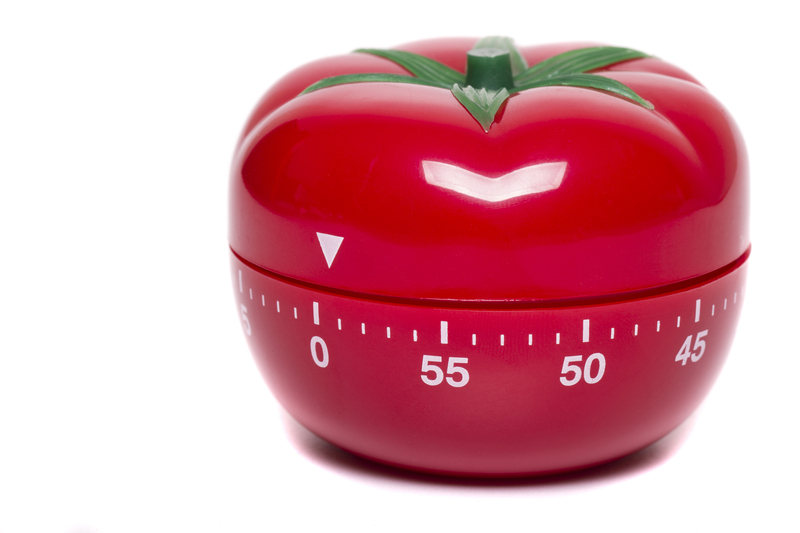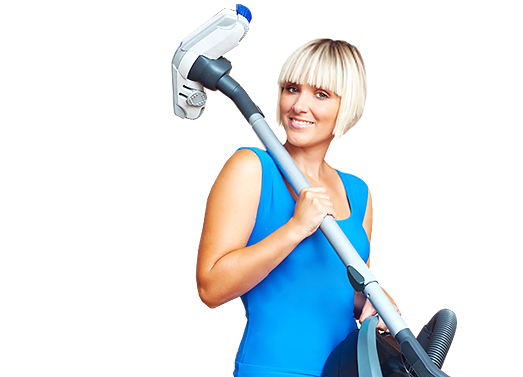Keep your bathroom spotless and mold-free with these simple steps
Posted on 18/06/2025
Keep Your Bathroom Spotless and Mold-Free with These Simple Steps
A sparkling, mold-free bathroom is the key to a healthy and inviting home. Mold and grime in bathrooms are not just unsightly; they can also pose health risks and damage your property over time. Fortunately, maintaining a fresh, clean, spotless, and mold-free bathroom is possible with a few easy habits and targeted cleaning strategies. This comprehensive guide will walk you through everything you need to know to keep your bathroom clean and free from mold, offering smart solutions, product advice, and prevention tips.
Why Is a Mold-Free Bathroom Essential?
Mold and mildew love the humid environment of bathrooms. Aside from being ugly, mold can lead to:
- Health issues like allergies, asthma, and respiratory infections
- Unpleasant odors that persist even after cleaning
- Staining and damage to tiles, grout, caulking, and paint
- Reduced property value and increased long-term repair costs
Keeping your bathroom spotless and free from mold is not just about looks--it's a wise investment in your family's well-being and your home's longevity.

Step 1: Maintain Proper Ventilation
Why Ventilation Matters
Moisture is the main enemy when aiming to keep your bathroom clean and mold-free. Steam and humidity from showers and baths provide the perfect breeding ground for mold. Improving ventilation is your first and most critical defense.
- Always run the exhaust fan during showers and for 15-20 minutes afterward
- If you don't have a fan, open a window to let humid air escape
- Consider installing a more powerful bathroom vent fan if moisture lingers
- Leave the door slightly open after use to further enhance air flow
A drier bathroom makes it much more difficult for mold and mildew to take hold.
Step 2: Eliminate Excess Moisture Immediately
Quick Tips for a Spotless, Mold-Resistant Bathroom
Mold spores can flourish on damp surfaces within 24-48 hours. Stopping moisture in its tracks should be a daily priority:
- Wipe down shower walls, doors, and bathroom tiles with a squeegee or absorbent towel after each use
- Hang up bath mats and towels to dry fully; avoid leaving them in damp heaps
- Fix any leaky faucets or pipes right away--constant drips can soak cabinets and walls
- Place a moisture absorber (like silica gel or DampRid) in particularly damp areas
The more thoroughly you dry surfaces, the easier it will be to prevent mold and keep your bathroom spotless.
Step 3: Use the Right Bathroom Cleaning Products
Best Products for Keeping Your Bathroom Mold-Free
Not all cleaning solutions are powerful enough to fight mold. Look for mold-killing, disinfecting, and soap-scum removing products, such as:
- Hydrogen peroxide - Tackles both mold stains and bacteria
- Bleach-based bathroom sprays - Effective at removing mold from tile and grout lines
- White vinegar - A natural, eco-friendly alternative for removing mildew
- Specialized mold removers - Available in most hardware stores for persistent mold issues
- Baking soda paste - Excellent for gentle scrubbing and deodorizing
Regularly clean all surfaces, especially those exposed to water, using your chosen products. Don't forget less-obvious spots like faucets, showerheads, the base of the toilet, and behind bottles.
Step 4: Tackle Tile, Grout, and Caulk Like a Pro
Deep Cleaning for Mold-Free Surfaces
Grout and caulking are the most vulnerable spots for mold growth in bathrooms. Protect these surfaces with:
- Weekly scrubbing of tiles and grout lines with an old toothbrush and mold-fighting cleaner
- Rinsing and drying thoroughly after each wash
- Inspecting caulking around sinks, tubs, and toilets--replace any peeling or cracked sections as damaged caulk allows water and mold to seep in
- Applying a grout sealer every six months to block moisture from penetrating porous grout lines
Keeping these areas in top condition practically guarantees a spotless, mold-free bathroom for years to come.
Step 5: Remove and Prevent Bathroom Clutter
Declutter to Prevent Mold
Less clutter means fewer hiding places for mold and easier cleaning. Here's how to simplify:
- Store only what you use daily on counters and shower caddies
- Keep bottles, razors, and loofahs off shower floors so water can fully drain away
- Empty wastebaskets regularly and keep lids closed
- Wipe down or rinse all items you keep in the shower to prevent soap scum and mildew
An organized bathroom is both easier to maintain and looks more spotless and inviting.
Step 6: Regularly Wash Bathroom Textiles
Keep Towels, Mats, and Shower Curtains Fresh
Fabrics in the bathroom easily absorb moisture and, if not washed often, will develop musty odors and even grow visible mold. Keep all textiles clean and mold-free by:
- Washing towels every two to three uses in hot water
- Cleaning bath mats weekly and ensuring they dry out fully between uses
- Replacing plastic shower liners every few months, or machine-washing fabric curtains regularly
- Using hooks or racks that allow towels and mats to get maximum airflow
Don't let damp fabrics linger! This small habit goes a long way toward a clean, dry, and mold-free bathroom.
Step 7: Address Persistent Bathroom Mold Issues
What to Do if Mold Keeps Coming Back
Sometimes, even with diligent cleaning, mold keeps returning. This may point to larger issues:
- Hidden leaks within walls or under floors
- Insufficient bathroom ventilation
- Poor insulation causing condensation
- Permanent water damage to drywall, wood, or subflooring
If these problems persist, contact a licensed plumber or mold remediation specialist. Don't ignore stubborn mold: tackling the root cause early can prevent health issues and major repairs down the line.
Bonus Tips for a Sparkling, Mold-Free Bathroom
- Install moisture-resistant paint or tiles, which repel water and inhibit mold growth
- Keep houseplants out of the bathroom--they can harbor mold in damp soil
- Add a shower squeegee to your daily routine for easy maintenance
- Check under sink cabinets and behind the toilet regularly for drips and standing water
- Consider using a dehumidifier if your bathroom is especially prone to dampness
- Replace and upgrade old, cracked grout or tilework to prevent water seepage
Simple Daily, Weekly, and Monthly Bathroom Cleaning Checklist
Daily
- Run fan and/or open windows
- Use a shower squeegee or towel to dry walls and doors
- Hang towels and mats to dry
- Keep the bathroom tidy and free of clutter
Weekly
- Scrub sinks, counters, toilet, and tub/shower enclosure
- Disinfect high-touch areas: light switches, handles, faucets
- Wash towels, bath mats, and shower curtains
- Check and clean grout and caulk for signs of mold
- Empty trash and wipe wastebasket
Monthly
- Inspect for leaks or water stains around plumbing
- Clean exhaust fan grilles and vents
- Apply grout sealer if needed
- Wash windows and walls
- Deep clean and organize bathroom cabinets and shelves

FAQs: Keeping Bathrooms Spotless and Free from Mold
How often should I deep-clean my bathroom to keep it mold-free?
Deep-clean your bathroom at least once a week, focusing on scrubbing tiles, cleaning grout lines, and disinfecting all commonly used surfaces. High-moisture areas or homes with poor ventilation may benefit from twice-weekly cleaning.
What's the safest way to remove stubborn mold?
Wear gloves and a mask to protect yourself. Use a bathroom-specific mold remover or a homemade mix of one part bleach to ten parts water. For eco-friendly cleaning, use undiluted white vinegar. Scrub affected areas, rinse well, and dry completely. If mold keeps returning or covers a large area, call a professional.
Are there any natural ways to prevent bathroom mold?
Yes! Ventilation, daily drying routines, using vinegar as a cleaner, and running a dehumidifier all make a significant difference. Baking soda also helps neutralize musty odors and discourage fungus growth on surfaces.
How do I keep my shower glass free of water spots and mildew?
Use a squeegee after every shower, and spray glass doors weekly with a vinegar-and-water solution. For stubborn spots, try a paste of baking soda and water. Keep seals and tracks clean and dry to avoid black mold build-up.
Why does mold keep coming back even after I clean it?
Persistent mold usually means deep-seated moisture or hidden leaks. Improving ventilation and identifying water sources is key. If repeated cleaning doesn't do the trick, consult a professional to investigate further.
In Conclusion: Enjoy a Spotless, Mold-Free Bathroom All Year Round
Keeping your bathroom spotless and mold-free doesn't have to be a challenge. By tackling moisture, cleaning regularly, and implementing smart organizational habits, you can ensure your bathroom stays fresh, beautiful, and safe for your entire family. Adopt these simple routines and products, watch for trouble spots, and say goodbye to mold and grime!
For more expert home cleaning advice and tips on maintaining spotless, mold-free bathrooms, keep reading our blog!





